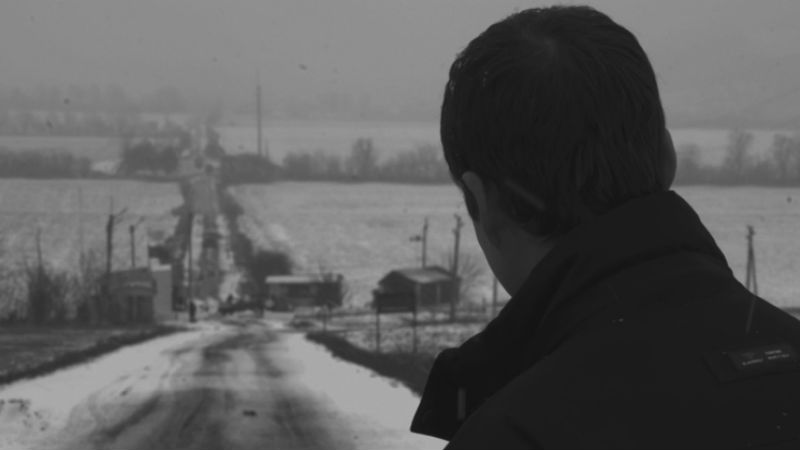QUICK SNAP: LIVE FROM BERLIN
Leonora addio is dedicated to the late Vittorio Taviani, with whom Paolo wrote and directed tens of films since 1954. One senses that the shadow of mortality hangs over the head of the now-solo nonagenarian director, creating an interesting if non-urgent reverie on the death and legacy of Luigi Pirandello, Italian and American relations and Italy’s post-War past. Fluid, experimental, handsomely-made and rather expansive in concept, I was never quite bored while watching it, but I never felt the need to sit up and pay any concentration either.
It starts in 1934, with the legendary Italian playwright receiving a Nobel Prize for literature. Two years later, he is on his deathbed: his children arrive, and slowly get older in front of his eyes. Mortality, whether individual or nation, is weaved throughout the film, which is alternately melancholic and bittersweet, as if the playwright is the aged Paolo himself, looking at the past through a mixture of essay and narrative forms.
There’s vintage footage of passing trains, neorealist films, refugees from the conflict, and texts explaining the legacy of Pirandello. Then there’s the first story, a plot so simple you can describe it in one sentence: An official carries Pirandello’s ashes from Rome to Sicily. Mussolini wanted a proper fascist burial, and did the pomp and circumstance back in 1936. Ten years later, his wishes for a simpler ceremony in his birthplace is finally carried out.
But people are superstitious about ashes, with no one wanting to take them on the plane. So he must travel through the old country by train. These sequences are some of the most gorgeous in the movie — shot in black-and-white wide-screen, the film offers gorgeous tableaus, romantic rendezvous, men playing cards, cigarettes being lit, lots of smoke. It’s all very cool and stylish, even if this is undercut by a repetitive sequence when the ashes are momentarily lost.
I’ve focused more on describing the film than analysing it, because, to be honest, I’m not quite sure what it’s about — especially when the movie cuts to New York to adapt a different Pirandello story altogether. Throughout Italians and Americans mix; whether it’s the soldiers in Italy, or the Italians in New York, and they don’t always get along. Despite the Italians building New York, the Americans liberating Sicily and the two of them coming up with spaghetti carbonara and the Americano, tensions still manage run deep between the deeply-intertwined countries.
While there is tension, there’s no conventional conflict to explore that tension in any deeper way, with the film kind of ambling along in a relatively pleasing way. I am basically a writer in search of an explanatory review. While they usually flow out of my hand without even really have to think about the words I use, Leonora addio has totally stumped me. I’ve been staring at a blank page, putting my hands in my head, and scrolling Twitter as much as I’ve actually spent time typing stuff down. Perhaps there’s a Pirandello play about writer’s block. It seems likely. So, in that way, weirdly, this film has my respect.
Leonara addio plays in Competition at the Berlin Film Festival, running from February 10th to the 20th.












